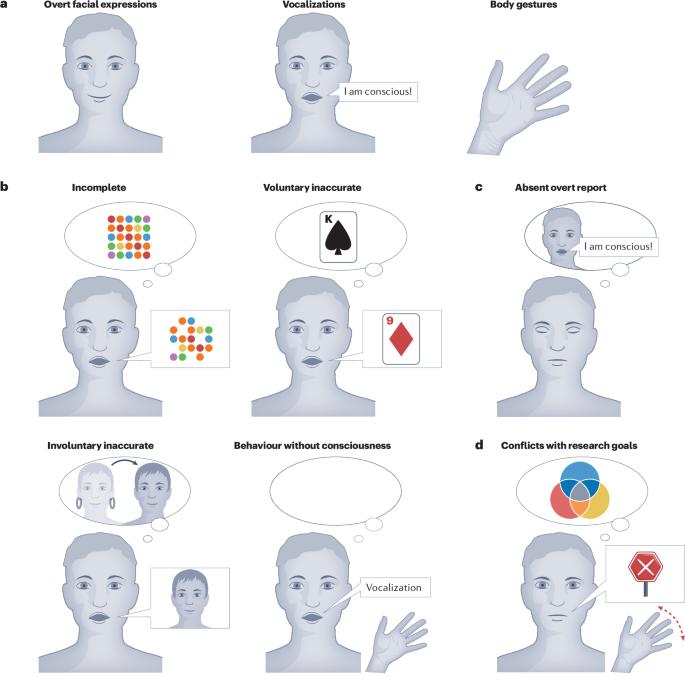Sleuthing subjectivity: a review of covert measures of consciousness
IF 26.7
1区 医学
Q1 NEUROSCIENCES
引用次数: 0
Abstract
Consciousness is private. Although conscious beings directly access their own conscious experiences, the consciousness of others must be inferred through overt report: observable behaviours — such as overt facial expressions, vocalizations and body gestures — that suggest the level, state and content of consciousness. However, overt report is limited because it can be erroneous (for example, resulting from wilful deception or being subject to recall error), absent (for example, during sleep and paralysis) or conflict with research goals (for example, in no-report paradigms and resting-state studies). These limitations encourage the search for covert measures of consciousness: physiological signals that disclose consciousness without relying on overt behaviour. This Review highlights emerging covert measures of consciousness in humans, including eye, skin, respiratory and heart signals. We also address the challenge of distinguishing physiological signals linked to conscious versus unconscious neural processing. Finally, we consider the ethical implications of infringing on the innate privacy of consciousness. Consciousness may be inferred in others through observable behaviours such as facial expressions and vocalizations. However, such overt reporting has limitations, leading to research on physiological signals that disclose consciousness without relying on overt behaviour. In this Review, Kronemer, Bandettini and Gonzalez-Castillo explore such covert measures of consciousness in humans.


侦查主体性:对意识的隐蔽测量的回顾
意识是私人的。尽管有意识的人直接接触到他们自己的意识体验,但其他人的意识必须通过公开的报告来推断:可观察到的行为——比如公开的面部表情、发声和肢体动作——表明了意识的水平、状态和内容。然而,公开报告是有限的,因为它可能是错误的(例如,由于故意欺骗或受到回忆错误的影响),缺席(例如,在睡眠和瘫痪期间)或与研究目标冲突(例如,在无报告范式和静息状态研究中)。这些限制促使人们寻找意识的隐蔽测量方法:不依赖于公开行为而揭示意识的生理信号。本综述重点介绍了新出现的人类意识的隐蔽测量,包括眼睛、皮肤、呼吸和心脏信号。我们还解决了区分与有意识和无意识神经处理相关的生理信号的挑战。最后,我们考虑侵犯意识的固有隐私的伦理含义。
本文章由计算机程序翻译,如有差异,请以英文原文为准。
求助全文
约1分钟内获得全文
求助全文
来源期刊

Nature Reviews Neuroscience
NEUROSCIENCES-
自引率
0.60%
发文量
104
期刊介绍:
Nature Reviews Neuroscience is a multidisciplinary journal that covers various fields within neuroscience, aiming to offer a comprehensive understanding of the structure and function of the central nervous system. Advances in molecular, developmental, and cognitive neuroscience, facilitated by powerful experimental techniques and theoretical approaches, have made enduring neurobiological questions more accessible. Nature Reviews Neuroscience serves as a reliable and accessible resource, addressing the breadth and depth of modern neuroscience. It acts as an authoritative and engaging reference for scientists interested in all aspects of neuroscience.
 求助内容:
求助内容: 应助结果提醒方式:
应助结果提醒方式:


